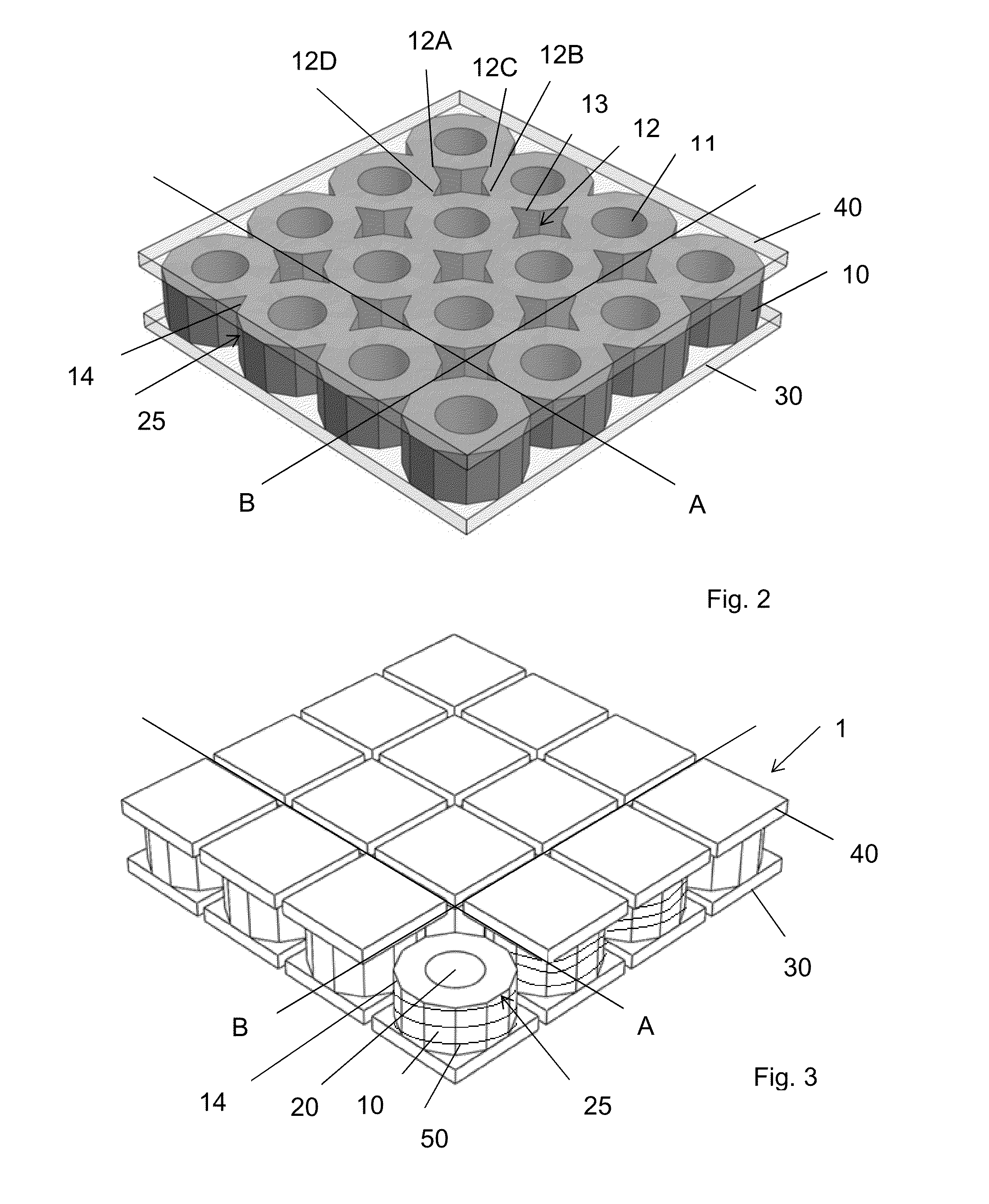Micro-machined vapor cell
a vapor cell and micro-machine technology, applied in the direction of pulse automatic control, pre-selected time interval producing apparatus, instruments, etc., can solve the problems of inability to adjust the strength of the magnetic field, the final device is quite bulky, and the reference to the portable application of the vapor cell cannot be found, so as to improve the control of the assembled components, reduce the volume, and reduce the effect of electrical resistan
- Summary
- Abstract
- Description
- Claims
- Application Information
AI Technical Summary
Benefits of technology
Problems solved by technology
Method used
Image
Examples
example 1
[0046]A micro-machined vapor cell comprises:[0047]a central silicon element forming a cavity containing vapor cell reactants such as alkali metal or alkali metal azide, buffer gas(es), and / or anti relaxation coating(s),[0048]a first and a second glass caps sealing the cavity, and[0049]a solenoid arranged to provide a homogeneous magnetic field to said vapor cell,
[0050]characterized in that the solenoid is coiled directly on the central silicon element, which forms the core of the solenoid.
example 2
[0051]The micro-machined vapor cell according to example 1, characterized in that the first and second glass caps define banking means to keep the solenoid coiled on the central silicon element.
example 3
[0052]The micro-machined vapor cell according to example 2, characterized in that the first and second glass caps exceed the central silicon element.
PUM
 Login to View More
Login to View More Abstract
Description
Claims
Application Information
 Login to View More
Login to View More - R&D
- Intellectual Property
- Life Sciences
- Materials
- Tech Scout
- Unparalleled Data Quality
- Higher Quality Content
- 60% Fewer Hallucinations
Browse by: Latest US Patents, China's latest patents, Technical Efficacy Thesaurus, Application Domain, Technology Topic, Popular Technical Reports.
© 2025 PatSnap. All rights reserved.Legal|Privacy policy|Modern Slavery Act Transparency Statement|Sitemap|About US| Contact US: help@patsnap.com



